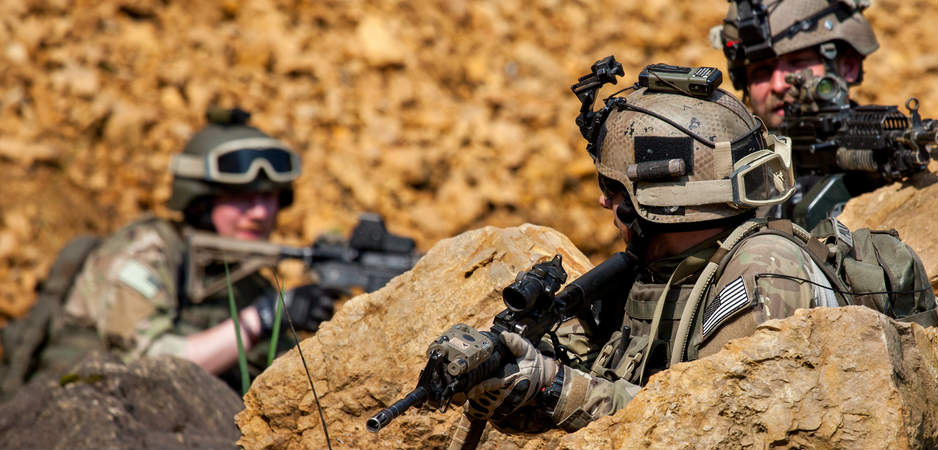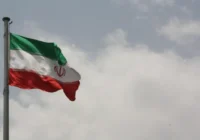The changing climate of warfare, growing instability and increased globalization have created a market for PMC services.
The rise of private military companies (PMCs) over the past few decades has been nothing short of meteoric. Operating in a realm once believed safe from privatization, PMCs have taken over various functions normally found within the realm of governments, national militaries and international organizations. Presently, the private military industry is grossing several hundred billion dollars annually, and operates in over 100 countries on six continents.
PMCs are beginning to play an ever more prominent role in international affairs around the world. But as P.W. Singer notes, the increased use of PMCs is accompanied by both promise and peril. On one hand, PMCs can provide many important services, such as helping alleviate the burden carried by militaries operating in hostile areas via support and security services, or by providing protection for multinational economic interests and aid workers in unstable places abroad. On the other hand, the growing use of PMCs has been accompanied by concerns related to their legitimacy, accountability, poor human rights record, over-privatization of governmental functions, and several others issues.
Background Reading
Some form of PMCs has always existed throughout the modern era, though in much smaller capacities and scope than today. What then led to the explosion of PMCs onto the international stage in recent history? Mercenaries have always played some sort of role in warfare throughout history, from recruitment by the ancient Egyptians up to the present. Certainly one would be hard pressed to try to identify an era or location that had not seen significant mercenary use in some form or other. The difference between these older “dogs of war” and their private contractor descendants is the business-like nature of PMCs.
PMCs operate legitimate multi-nationals “along corporate lines,” complete with shareholders and boards of directors. Also, unlike mercenaries who are considered private soldiers for hire with no set loyalty other than monetary gain, PMCs are contractually obligated to their clients and provide a variety of services beyond taking part in armed conflict. Though the use of PMCs is not without cause for concern, the majority of PMCs have proven themselves to be capable professionals working for business, “not individual or black market,” profit.
The single most important factor in the rise of the private military industry was the end of the Cold War. With its end came a tremendous shift in the world’s political and economic environment. First of all, it marked the anti-climatic conclusion to the longstanding standoff between the world’s two superpowers and their respective allies — an event whose ramifications were global in nature. It was accompanied by a massive downsizing of global militaries.
The nature of combat changed dramatically after the Cold War. The new type of combat was no longer primarily between two states, but was instead small-scale intrastate conflicts or civil wars. Between 1989-99, of the 110 major armed conflicts that occurred, only seven were conventional inter-state wars, while the rest were internal.
The US military was effectively decreased by 35%, while the British Army was reduced to the smallest it had been since the Napoleonic Wars. The same effect was seen in the East, as the Soviet Empire disintegrated and the Red Army was dissolved and divided between Russia and other post-Soviet successor states. The gradual reduction of the world’s largest standing armies meant there was a surplus of highly skilled professional soldiers who were either retiring early or looking for work. These former soldiers were quickly recruited by PMCs around the world and offered lucrative salaries for their services.
Secondly, the end of the Cold War had far-reaching geostrategic implications. With the close of the struggle between the East and West came the end of competing spheres of influence throughout the Third World. The necessity for supporting weak regimes simply for the sake of influence abroad ended leading to a continual reduction of aid to former “proxies.” The abrupt departure of great power patronage from the developing world led to a power vacuum, which catapulted many nation-states to the brink of failure and pushed many more into chaos.
The instability in these developing areas spawned a host of low-intensity inter-communal and ethnic conflicts. In addition, many developing countries never accrued effective military capabilities, making their governments vulnerable to overthrow or insurrection. The fragility of these developing states, combined with internal threats, created a fresh market for PMCs to provide training, security and even combat support. The changing nature of the international system, and the turbulence that followed, gave the private military industry plenty of opportunities for employment.
Thirdly, the nature of combat changed dramatically after the Cold War. The new type of combat was no longer primarily between two states, but was instead small-scale intrastate conflicts or civil wars. Between 1989-99, of the 110 major armed conflicts that occurred, only seven were conventional inter-state wars, while the rest were internal. Making things worse was the accessibility of affordable weaponry in the wake of the Cold War.
The disorder that consumed the former Soviet Union allowed huge weapons caches to be bought up inexpensively and smuggled to eager buyers in the Third World. The private military industry was able to profit from the multitude of low-intensity conflicts emerging around the world. Small-scale conflicts were the type of combat at which PMCs excelled, as they were versed in tactical guerilla-warfare and counterinsurgency. Military contractors were usually professional soldiers trained by the most modern armies in the world, making them far better prepared to tackle domestic problems than ill-equipped conscripted armies.
The fourth event leading to the rise of PMCs in the wake of the Cold War was the victory of capitalism over communism as the socioeconomic system of choice. After communism fell, most of the world opened up their markets and began the process of economic liberalization. Rapid globalization followed and was accompanied by a new era of global privatization.
In time, the role of the state, especially in the West, slowly began to reshape to serve market liberalization. Institutions once belonging to the public sector, including prisons, education and security, became increasingly privatized. The military was one of these institutions. As Singer points out, PMCs were the natural corporate evolution of mercenarism. The changing climate of warfare, growing instability in the world, and increased globalization created a significant market for PMC services in the post-Cold War period.
*[Read the final part here.]
The views expressed in this article are the author’s own and do not necessarily reflect Fair Observer’s editorial policy.
Support Fair Observer
We rely on your support for our independence, diversity and quality.
For more than 10 years, Fair Observer has been free, fair and independent. No billionaire owns us, no advertisers control us. We are a reader-supported nonprofit. Unlike many other publications, we keep our content free for readers regardless of where they live or whether they can afford to pay. We have no paywalls and no ads.
In the post-truth era of fake news, echo chambers and filter bubbles, we publish a plurality of perspectives from around the world. Anyone can publish with us, but everyone goes through a rigorous editorial process. So, you get fact-checked, well-reasoned content instead of noise.
We publish 2,500+ voices from 90+ countries. We also conduct education and training programs
on subjects ranging from digital media and journalism to writing and critical thinking. This
doesn’t come cheap. Servers, editors, trainers and web developers cost
money.
Please consider supporting us on a regular basis as a recurring donor or a
sustaining member.
Will you support FO’s journalism?
We rely on your support for our independence, diversity and quality.







Comment